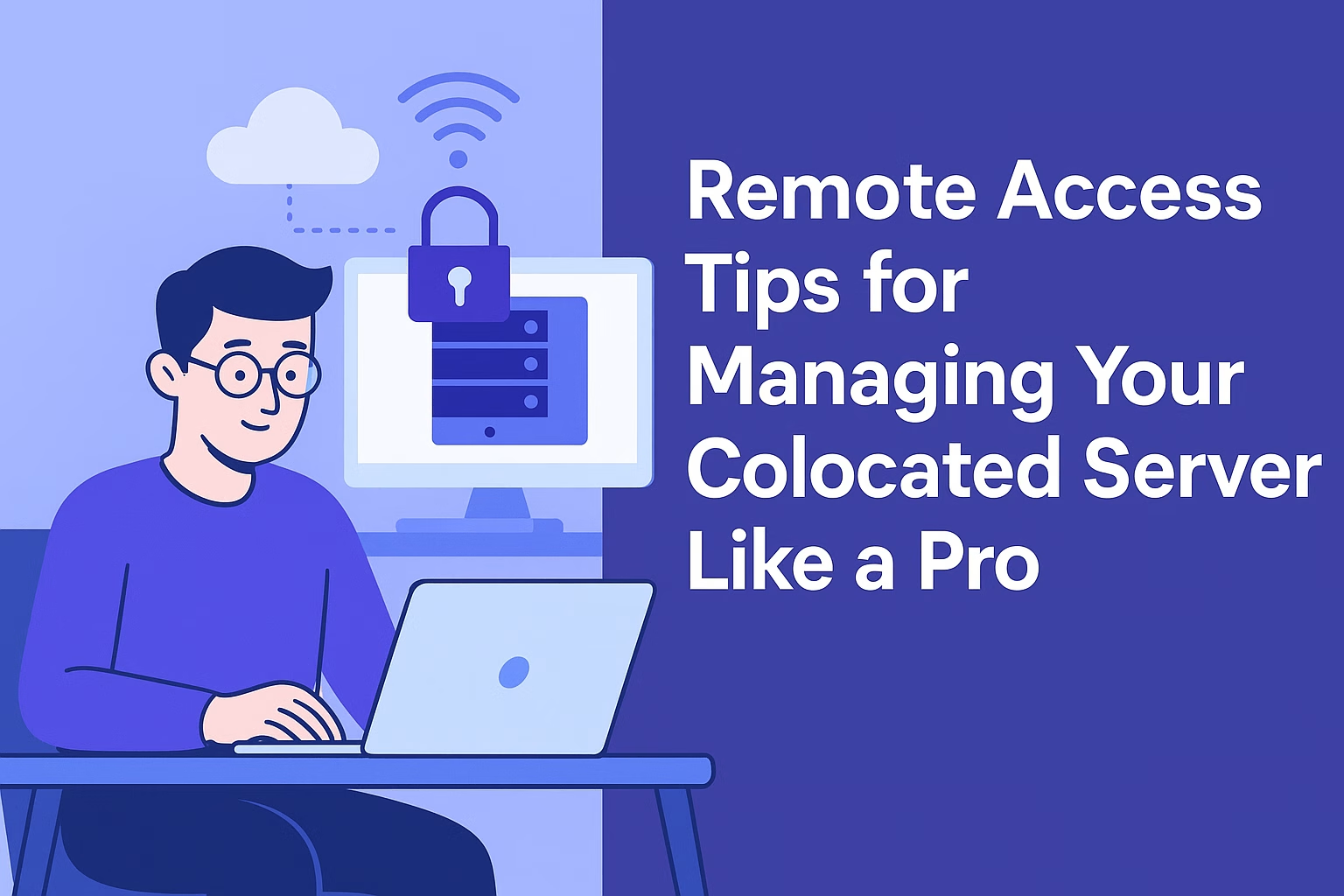Colocation gives you complete control over your physical server — but with great power comes the need for smart, secure remote access.
Since you won’t be physically near your hardware, having the right tools and best practices in place is essential to run your server smoothly from anywhere.
Here are some pro tips to manage your colocated server remotely — like a seasoned sysadmin.
🔐 1. Secure SSH Is Your Best Friend
For Linux-based servers, SSH (Secure Shell) is your main gateway.
-
Use key-based authentication (never passwords alone)
-
Disable root login and create limited sudo users
-
Change the default SSH port (22) to a custom one
-
Use tools like
fail2banorCSFto block brute-force attempts
🛡️ Security tip: allow access only from trusted IPs via firewall or VPN.
🧠 2. Set Up Out-of-Band Management (If Possible)
If your server supports IPMI, iDRAC, or iLO, enable and secure it.
Out-of-band (OOB) access lets you:
-
Reboot your machine
-
Enter BIOS/UEFI remotely
-
Mount ISO files or reimage the system
-
Troubleshoot even if the OS is offline
💡 This is your “Plan B” when SSH fails.
🌐 3. Use a VPN for Admin Access
Exposing management ports directly to the internet can be risky.
Instead:
-
Set up an internal VPN on your server or via an edge firewall
-
Only allow SSH, RDP, or admin panels via VPN
-
Use WireGuard or OpenVPN for fast, secure tunnels
🔒 One more layer to keep intruders out.
🖥️ 4. Install a Lightweight Web-Based Dashboard
Consider adding a GUI for easier monitoring or non-terminal access:
-
Cockpit – for server monitoring, updates, and user/session management
-
Webmin – powerful admin panel
-
Netdata – beautiful real-time metrics dashboard
⚙️ Ideal for hybrid teams or when quick visual checks are needed.
📊 5. Set Up Alerts and Monitoring
Don’t wait until something breaks. Install monitoring tools that alert you in real-time:
-
CPU/RAM/disk usage
-
Network traffic spikes
-
Failed login attempts
-
Service crashes (Apache, MySQL, etc.)
Tools you can use:
-
Zabbix / Nagios / UptimeRobot
-
Netdata + Telegram/email alerts
-
Custom scripts with
cron+mailx
🚨 Catch problems early — before users notice.
🔁 6. Automate Backups & Remote Syncs
Your colocated server should back up important data automatically to remote storage:
-
Use
rsync,rclone, or SFTP -
Schedule backups via
cron -
Store offsite — on another server, S3-compatible storage, or cloud
🔁 PLiKhost also offers remote backup space — ask us if you need one.
📌 7. Use PLiKhost’s Remote Hands Wisely
If something physically goes wrong:
-
Let us know the issue (with clear instructions)
-
Provide credentials or authorization if necessary
-
Use our “remote hands” team to reseat hardware, reboot, replace disks, or plug in KVM/IP
🤝 We act as your hands on-site — quickly and securely.
🧰 8. Keep Remote Access Tools Updated
Make sure to:
-
Regularly update your SSH server or VPN packages
-
Rotate keys and change credentials periodically
-
Document all changes in a central log
🧠 A good habit prevents future headaches.
Final Thoughts
Remote access is the backbone of successful colocation hosting.
With the right setup — from secure SSH to smart monitoring — you can confidently manage your server without ever setting foot in the data center.
🟢 Colocate with PLiKhost Today
We provide the infrastructure, you stay in control — from anywhere in the world.






